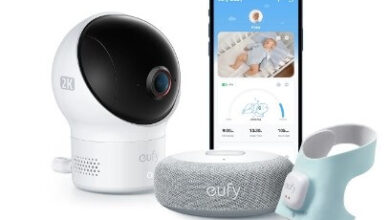How is augmented reality (AR) changing the retail and marketing landscape?

Introduction
Augmented reality (AR) has emerged as a transformative technology, reshaping various industries with its immersive and interactive capabilities. In retail and marketing, AR is revolutionizing the way businesses engage with customers, offering unique experiences that blend the digital and physical worlds. This article explores the profound impact of AR on the retail and marketing landscape, examining its benefits, applications, and future potential.
Understanding Augmented Reality (AR)
Augmented reality (AR) is a technology that overlays digital content onto the real world, enhancing the user’s perception and interaction with their environment. Unlike virtual reality (VR), which creates a fully immersive digital environment, AR integrates digital elements into the physical world, providing a more seamless and interactive experience.
The Evolution of AR in Retail and Marketing
The integration of AR in retail and marketing has evolved significantly over the past decade. Initially used for simple overlays and basic interactive experiences, AR technology has advanced to offer sophisticated, immersive applications that enhance customer engagement and drive sales. Today, businesses leverage AR to create personalized shopping experiences, innovative marketing campaigns, and efficient operational processes.
Enhancing Customer Engagement
AR enhances customer engagement by providing interactive and immersive experiences that captivate consumers. In retail, AR allows customers to visualize products in their environment before making a purchase, reducing uncertainty and increasing confidence. Marketing campaigns utilize AR to create memorable and shareable experiences, fostering deeper connections between brands and consumers.
Personalized Shopping Experiences
One of the most significant impacts of AR in retail is its ability to offer personalized shopping experiences. AR applications enable customers to try on clothes, accessories, and even makeup virtually, ensuring a perfect fit without the need for physical interaction. This personalized approach not only enhances the shopping experience but also reduces returns and increases customer satisfaction.
Virtual Try-Ons and Fitting Rooms
Virtual try-ons and fitting rooms are among the most popular AR applications in retail. These tools allow customers to see how products will look on them or in their homes, making the shopping process more convenient and enjoyable. Retailers like IKEA and Sephora have successfully implemented AR to allow customers to visualize furniture in their homes and try on makeup virtually.
Interactive Product Demos
AR enables retailers to provide interactive product demonstrations, showcasing features and benefits in an engaging way. This interactive approach helps customers understand the value of products, leading to more informed purchasing decisions. Brands like LEGO use AR to demonstrate how their products work, enhancing the customer experience and driving sales.
In-Store Navigation and Assistance
AR can improve in-store navigation and assistance, helping customers find products more easily and enhancing their shopping experience. AR-enabled apps guide customers through stores, providing directions, product information, and personalized recommendations. This technology reduces frustration and increases customer satisfaction by making the shopping process more efficient.
Innovative Marketing Campaigns
AR is transforming marketing campaigns by offering innovative ways to engage with consumers. Brands use AR to create immersive experiences that capture attention and drive interaction. From interactive billboards to AR-powered mobile apps, marketing campaigns are becoming more creative and effective with the integration of AR technology.
Case Studies: Successful AR Campaigns
Numerous brands have successfully leveraged AR in their marketing campaigns. For example, Pepsi’s “Unbelievable Bus Shelter” campaign used AR to create surprising and entertaining experiences at bus stops, increasing brand awareness and engagement. Similarly, Nike’s “SNKRS” app uses AR to offer exclusive product releases and interactive experiences, driving customer loyalty and sales.
Improving Operational Efficiency
AR is also improving operational efficiency in retail by streamlining processes and enhancing employee training. AR applications can provide real-time information and guidance to employees, reducing errors and increasing productivity. In warehouses, AR can assist with inventory management and order picking, optimizing operations and reducing costs.
AR in Inventory Management
In inventory management, AR can provide real-time visibility into stock levels and locations, improving accuracy and efficiency. AR-enabled devices can guide employees to the exact location of products, reducing time spent searching and minimizing errors. This technology enhances overall inventory management, leading to cost savings and improved customer service.

AR for Training and Development
AR is revolutionizing employee training and development by offering immersive and interactive learning experiences. Training programs that incorporate AR can simulate real-world scenarios, allowing employees to practice skills and procedures in a safe environment. This hands-on approach enhances learning outcomes and prepares employees more effectively for their roles.
The Future of AR in Retail and Marketing
The future of AR in retail and marketing is promising, with continued advancements in technology and increasing adoption by businesses. AR is expected to become more integrated into everyday shopping experiences, offering even more personalized and immersive interactions. As technology evolves, AR will continue to shape the retail and marketing landscape, driving innovation and enhancing customer engagement.
Challenges and Considerations
While AR offers numerous benefits, there are also challenges and considerations to address. High development costs, technical limitations, and user adoption are some of the hurdles businesses must overcome. Additionally, ensuring a seamless and intuitive user experience is crucial for the successful implementation of AR in retail and marketing.
Overcoming Technical Limitations
To overcome technical limitations, businesses must invest in robust AR solutions and infrastructure. This includes high-quality AR content, reliable internet connectivity, and compatible devices. Collaborating with AR experts and developers can help businesses create effective and engaging AR applications that meet their specific needs.
Addressing User Adoption
User adoption is a critical factor in the success of AR applications. Businesses must educate customers about the benefits of AR and provide user-friendly interfaces to encourage adoption. Marketing efforts should highlight the convenience and value of AR experiences, motivating customers to engage with the technology.
Measuring AR Success
Measuring the success of AR initiatives is essential for optimizing strategies and demonstrating ROI. Key performance indicators (KPIs) such as engagement rates, conversion rates, and customer satisfaction can provide valuable insights into the effectiveness of AR applications. Businesses should regularly analyze these metrics to refine their AR strategies and achieve better results.
The Role of Data Analytics
Data analytics plays a vital role in understanding the impact of AR on retail and marketing. By analyzing user interactions and behaviors, businesses can gain insights into customer preferences and optimize their AR experiences accordingly. Leveraging data analytics helps businesses make informed decisions and enhance the overall effectiveness of their AR initiatives.
The Impact of AR on Consumer Behavior
AR has a significant impact on consumer behavior, influencing purchasing decisions and brand loyalty. The interactive and immersive nature of AR experiences creates a memorable and engaging shopping journey, leading to increased customer satisfaction and repeat purchases. Understanding these behavioral shifts is crucial for businesses looking to leverage AR effectively.
AR and Social Media Integration
Integrating AR with social media platforms offers new opportunities for engagement and brand promotion. Social media AR filters and effects allow users to interact with brands in creative ways, enhancing visibility and reach. Brands like Snapchat and Instagram offer AR tools that businesses can use to create interactive and shareable content.
AR for Brand Storytelling
AR is a powerful tool for brand storytelling, allowing businesses to create immersive narratives that resonate with consumers. By incorporating AR into marketing campaigns, brands can convey their stories more effectively and emotionally connect with their audience. This immersive approach enhances brand perception and loyalty.
Enhancing Customer Support with AR
AR can also enhance customer support by providing real-time assistance and troubleshooting. AR applications can guide customers through product setup and usage, reducing the need for traditional support channels. This self-service approach improves customer satisfaction and reduces support costs for businesses.
AR in E-Commerce
In e-commerce, AR is transforming the online shopping experience by providing interactive and personalized features. AR tools enable customers to visualize products in their environment, try on virtual items, and receive personalized recommendations. This enhanced experience bridges the gap between online and offline shopping, driving e-commerce growth.
The Role of AR in Physical Stores
Physical stores are leveraging AR to create unique and engaging in-store experiences. AR displays and interactive kiosks provide customers with additional information and entertainment, enhancing the shopping experience. This technology attracts foot traffic and encourages customers to spend more time in stores, increasing sales opportunities.
The Competitive Advantage of AR
Adopting AR can provide businesses with a competitive advantage by differentiating their offerings and enhancing customer experiences. Early adopters of AR technology can capture market share and build stronger brand loyalty. Staying ahead of the curve with innovative AR applications is crucial for businesses looking to thrive in the competitive retail and marketing landscape.
AR and Customer Loyalty Programs
AR can enhance customer loyalty programs by offering interactive and personalized rewards. AR-based loyalty programs provide unique experiences that encourage repeat purchases and brand engagement. By integrating AR into loyalty strategies, businesses can strengthen their relationships with customers and increase long-term loyalty.
Future Trends in AR Technology
Future trends in AR technology include advancements in wearable devices, improved AR content creation tools, and enhanced integration with other technologies like artificial intelligence and the Internet of Things (IoT). These trends will further expand the possibilities of AR in retail and marketing, driving innovation and growth.
FAQs
How does AR enhance the customer shopping experience?
AR enhances the customer shopping experience by providing interactive and immersive features such as virtual try-ons, personalized recommendations, and in-store navigation. These features increase convenience and satisfaction, leading to better purchasing decisions.
What are some successful examples of AR in marketing?
Successful examples of AR in marketing include Pepsi’s “Unbelievable Bus Shelter” campaign, Nike’s “SNKRS” app, and IKEA’s AR-enabled furniture visualization tool. These campaigns effectively engaged customers and drove brand awareness.
What challenges do businesses face when implementing AR?
Businesses face challenges such as high development costs, technical limitations, and user adoption when implementing AR. Addressing these challenges requires investing in robust AR solutions, educating customers, and providing seamless user experiences.




